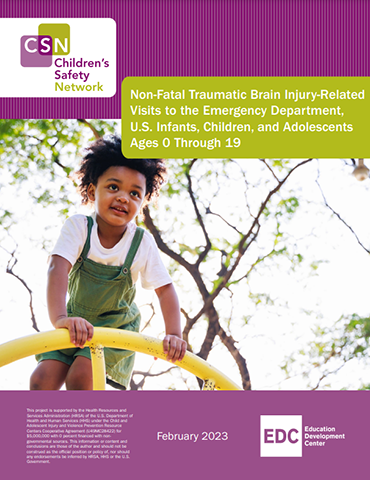
A traumatic brain injury (TBI) can be mild, moderate or severe. It is defined as a disruption in the normal functioning of the brain due to a bump, blow, or jolt to the head or a penetrating head injury.1 It is a major cause of morbidity and mortality in the U.S. that can have life-long financial, cognitive, and physical costs. TBI contributes to approximately 1 in 3 of all injury deaths in infants, children, and adolescents2 and those who survive TBI often experience cognitive, emotional, and physical impairment, and adverse outcomes, such as difficulty with everyday memory, educational performance, and adaptive skills.
The Children’s Safety Network (CSN) explored emergency department (ED) visits related to TBI among 0 through 19-year-olds by demographics, activity and object involved, and intent. This information can be used by states and jurisdictions to guide their TBI prevention efforts.
1 Centers for Disease Control and Prevention. (2022). Traumatic Brain Injury & Concussion: Moderate and Severe TBI. Retrieved from https://www.cdc.gov/traumaticbraininjury/moderate-severe/index.html
2 Cheng, P., Li, R., Schwebel, D. C., Zhu, M., & Hu, G. (2020). Traumatic brain injury mortality among U.S. children and adolescents ages 0-19 years, 1999-2017. Journal of Safety Research, 72, 93–100. Retrieved from https://www.sciencedirect.com/science/article/pii/S0022437519306711